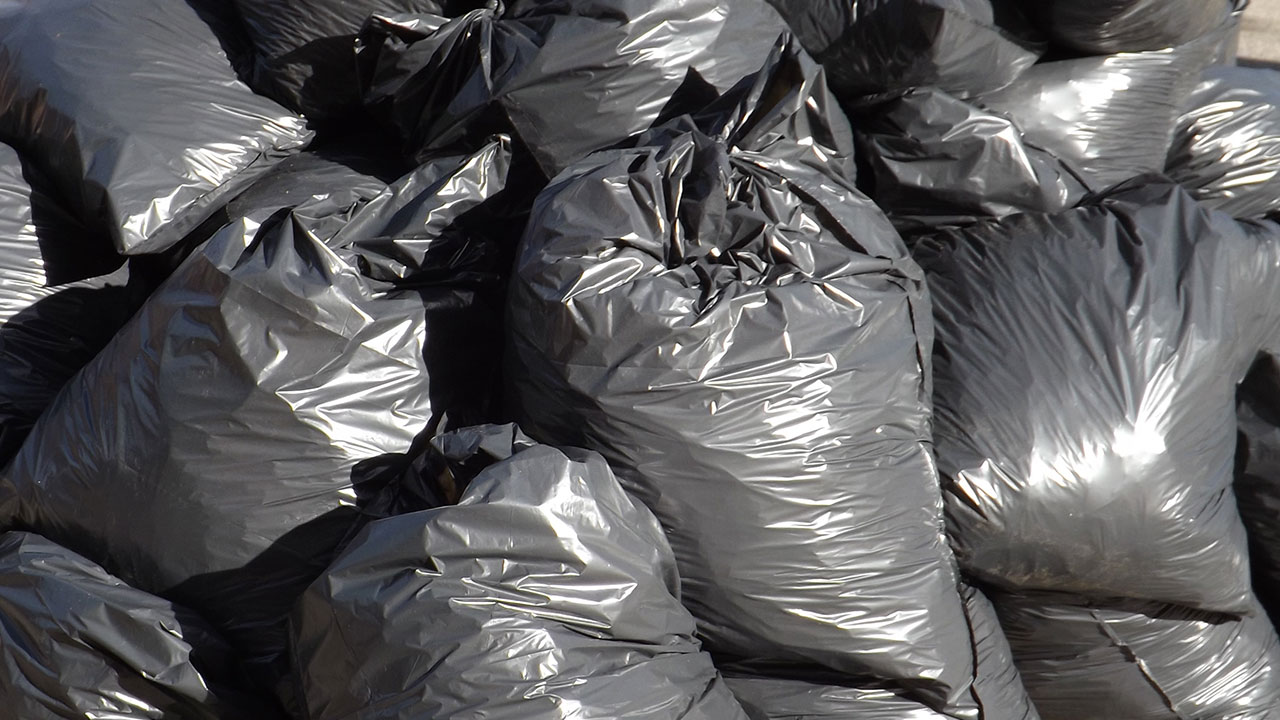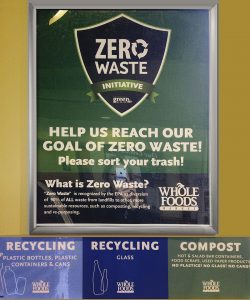Zero Waste, what does it actually mean?


By Ashleigh Prince
out&about is my personal journey of discovery asking questions and getting more informed. I want to share my findings with you so we can travel the journey together.
While having a quick breakfast this past Saturday at Whole Foods Market, I noticed a poster on the wall I hadn’t seen before. It said:
Zero Waste Initiative Green
And below that it said: What is Zero Waste?
I realized I had a very different concept of Zero Waste than the EPA. Here is how it’s defined:
“Zero Waste” is recognized by the EPA as diversion of 90% of ALL waste from landfills to other, more sustainable resources, such as composting, recycling, and re-purposing.
My definition: Zero Waste, period!
Ok, my definition is a lot harder to actually achieve in this day and age we are living in and the EPA’s is more attainable. However, I think it’s still smart to be mindful of what we are consuming and to ask ourselves, “How can I eliminate any excess waste in what I am purchasing?“
Here are a few things that I have incorporated to reduce waste:
- I don’t use plastic produce bags. Instead, I shop either at a Farmers Market for my produce or if I am at a market, I shop like I’m at a Farmers Market. I don’t need a separate bag for my produce.
- I bring my own coffee mug or water bottle. In the Pacific Northwest, it’s not usual for people to arrive for their morning coffee with their mug in hand.
- I bring my own reusable bags, to the market or wherever I am shopping.
- I now have my receipts emailed to me, wherever that is offered. I love having less paper to file or throw away.
- I have a compost pile for my vegetables.
- I buy glass whenever that option is available since I can use the jar for storing nuts, lentils, etc.
- I bulk shop whenever possible; that includes spices too. I reuse the bags they provide or I bring my own container, have them weigh it ahead of time so they will know how to charge me correctly.
- If I am picking up my favorite kale salad to take away at whole foods, I’ll bring my own bowl, weigh it with the cashier, and voila! This is great for potlucks and picnics.
- When I am meeting a friend for a coffee, I ask them to put it in a to-stay cup.
- I make my own almond milk now, one less container to buy. It’s super easy and taste so much better. See my simple recipe below.
These are 10 ways in which I have found I can immediately begin to reduce my waste and they are all pretty easy minus the composting. That requires some research and some time but it feels better to return the waste to the earth where it can do a much better job of decomposing and utilizing it than the landfill.
Ashleigh’s simple Almond milk recipe
- 1 cup of almonds (add more or less, depending on how quickly you’ll be using the milk. It only lasts a few days.)
- Soak in filtered water overnight
- Rinse
- Put into a blender and add twice the amount of water to almonds
- Mix for 3 minutes
- Pour into a NUT bag, and squeeze the milk out into a bowl. (You can purchase these at most markets; I picked mine up from Whole Foods Market for $12.)
(You can save the almond meal, dry it or cook something with it that day.) - Add more water, depending upon how thick or thin you like your almond milk.
- Put it in glass jars and voila!
I don’t like to add anything and I usually add double the water.
Optional:
Some people like to add: a little salt, honey or some other sweetener, a drop or two of vanilla.
Happy reducing!
Make less, buy less, use less, throw away less.
— Akiko Busch
Cheers,
![]()


